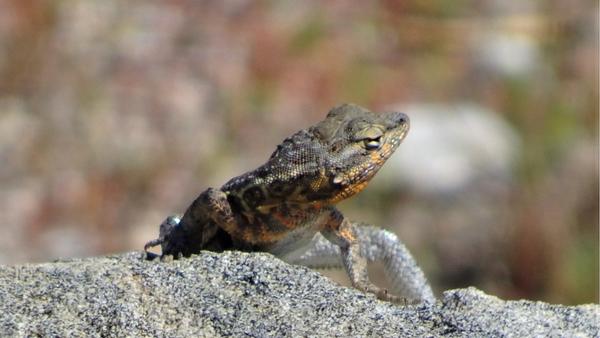What Common Species Can Teach Us
“To do science is to search for repeated patterns, not simply to accumulate facts.” — Robert MacArthur
Robert MacArthur was a brilliant theoretical ecologist and mathematician. He was also a naturalist who studied east coast warblers and the puzzle of how so many different birds could coexist within the same forest.
Then he and E.O. Wilson developed their “Theory of Island Biogeography," a theory that established many or the core objectives of conservation today, such as preserve size and connectivity. Doing science in a laboratory, where most of the variables can be controlled and accounted for, is typically how the public envisions science; they are not wrong. Nature is messy, where all the variables cannot be controlled let alone accounted for. However, nature is real, the laboratory is an abstraction. Patterns discerned in a laboratory may or may not reflect what happens in nature. Nature is where species make a living, survive or not the onslaught of predators, competitors, pollinators, disease, climate, storms, feast, and famine, and if they survive, reproduce, and continue their genetic line. Doing science in nature is the search for repeated patterns and fitting those patterns into an explanatory framework; discerning repeated patterns from what often appears to be randomness is the challenge.
Distinguishing patterns from randomness in nature requires lots of data. One or even a healthy handful of observations does not constitute a pattern. Patterns must be consistent over time and space across many individuals. So, studying rare species, however charismatic, can take a lot of time and effort before patterns might emerge. Studying common species, those “dime-a-dozen” species, can reap much more data much faster. By far the most common desert lizard is the side-blotched lizard. One of the least commonly encountered desert lizards is the collared lizard. Collared lizards are top predators who commonly eat, you guessed it, side-blotched lizards. In fact, drawing parallels with say the Serengeti plains of Africa, collared lizards are the lions, and side-blotched lizards are the wildebeest, food for all the major predators. Nature shows on television tend to focus on the rare, charismatic predators, not so much on the wildebeests’ perspective. The result is an engaging glimpse into the day-to-day activity of a single pride of lions, but no science. We have no way of knowing whether the trials and tribulations of that lion pride constitute a pattern common among all or most other lion prides, and so cannot draw any conclusions about patterns. Seeing collared lizards is exciting, but rare. Seeing side-blotched lizards, lots of side-blotched lizards is commonplace.
Growing up, I was hooked on every nature show aired on my parent’s black and white TV. Mutual of Omaha’s Wild Kingdom with Marlin Perkins (the brains) and Jim Fowler (the muscle) was my favorite in the 1960s. As a result, I was “programmed” to focus on those rare top predators, and so was naturally drawn to study spotted owls for my master’s degree. I could tell you everything about the diet, roost site selection, and breeding success of 2-3 pairs of owls, but I had no way of knowing if those “patterns” extended beyond those 2-3 pairs. When we first moved to the desert in the 1980s, I discounted those “dime-a-dozen” side-blotched lizards as being too common to be of any interest. Only after becoming increasingly concerned about the fate of desert species in the face of climate change, did I get my epiphany. To understand the impacts of a hotter, more arid desert, and to identify broad patterns with lots of data, I needed to look at the common species. Now every time I see a side-blotched lizard, or a brittlebush, a creosote bush, a desert mallow, or a sweetbush, I see broad patterns being confirmed or modified.
Side-blotched lizards, brittlebush, globe mallow, and sweetbush all are following a similar pattern. Each has become increasingly less common at lower elevations and more common at higher elevations, and similarly, less common in eastern portions of the Coachella Valley while increasing westward. These higher elevation and westward landscapes are cooler and less arid and thus are sustaining dense populations of these species, while on hotter and drier landscapes they are declining every year. Only creosote bushes failed to follow this pattern; they are equally common throughout, however more seedling recruitment is occurring at the higher elevations and westward. We are also seeing side-blotched lizards migrating to higher elevations where they had once been absent but are now increasing each year. So, while at lower, eastern sites this otherwise common lizard is becoming less common, we are seeing an upper elevation wave of new immigration as its happening. At one level it is shocking that climate change is creating these upheavals in species distributions, there is some consolation in seeing that, at least so far, these species are adapting to their changing world.
I have learned my lesson. Common species have as much, and arguably more, to teach us than those rare ones that are otherwise more likely to grab our attention. First, by being common they have demonstrated their ability to succeed and sustain populations, unconstrained by harsh heat and aridity. Second, being successful does not mean that they are immune to the increasingly cruel effects of climate change. And third, because of their relative plenty they provide the opportunity to collect abundant data enabling us to do better science and document these repeated patterns as they occur in multiple species.

